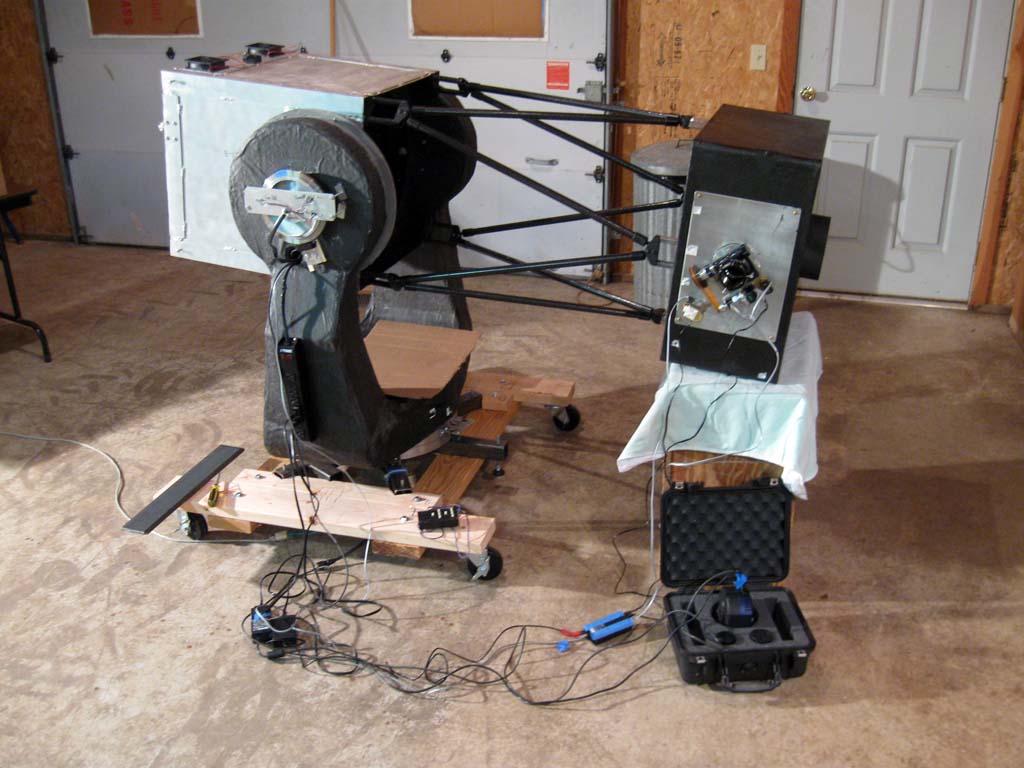
Cal Poly 18 Bulletin 09
2012-03-08: Fifteen Minutes Unguided
Getting Ready...
When we brought it to my shop, the Cal Poly 18 was still configured as developmental prototype. Weights were held with clamps, wires dangled everywhere, important parts were exposed to dirt, dew, and possible accident. Readying it for regular observation required reworking temporary kludges into reasonably robust systems.

Above, the wiring to the focus of the Cal Poly is spread out for functional testing. Once I was sure the focuser focused, the rotatator rotated, and the camera took images, cables could be routed in ways that would not interfere with the motion of the telescope. Less obvious, balancing the telescope required rethinking the counterweights. Ideally, the weighting scheme would allow me to balance the telescope perfectly at any altitude, and then, by adding a few additional weights, to move to the desired postion at the zenith or to a resting angle of 60 degrees. Also, because the altitude axis had next-to-zero friction, we needed to add just enough friction for the altitude motor to work against.
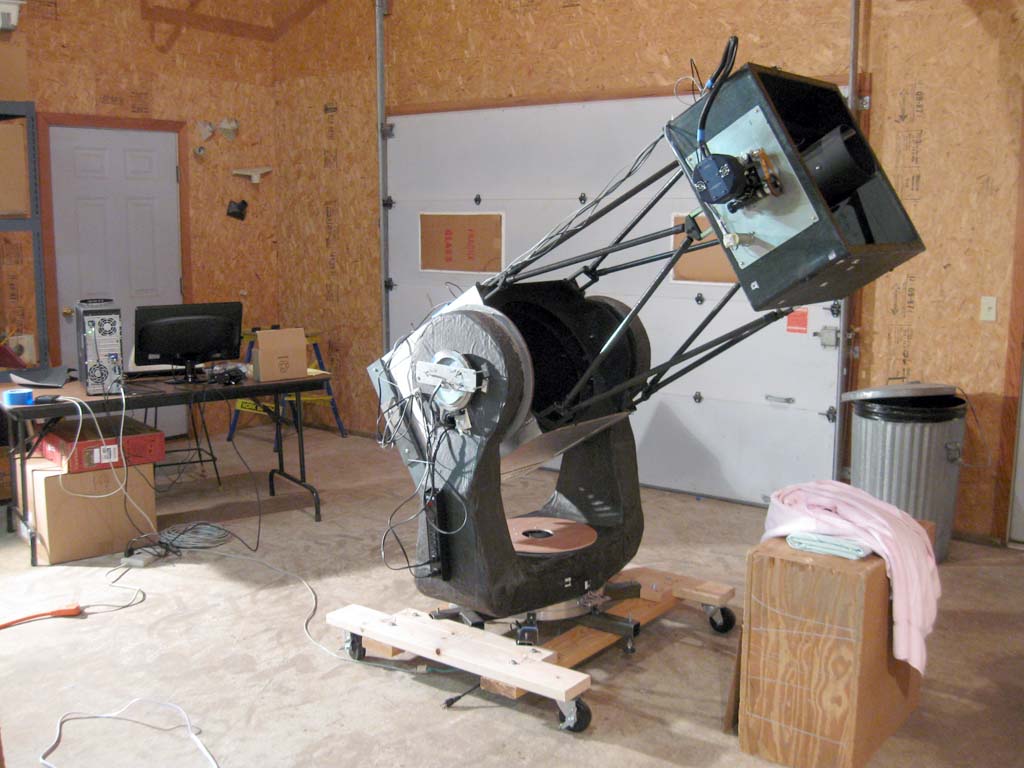
At the stage seen above, the wiring and counterweights are in place, and the telescope is perfectly neutral in balance. It would stay at any altitude you put it, and move easily to any other altitude. I did several variations on the cables going to the focuser motor and camera to find a configuration that allowed 360 degrees of rotation without snagging.
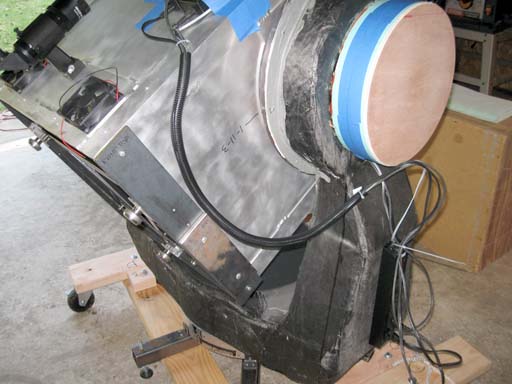
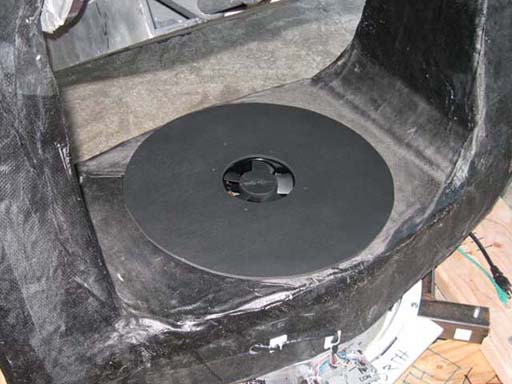
At left, the altitude encoder, limit switches, and home sensor are covered, and the cables coming off the tube to the fork are encased in 3/4-inch plastic loom. At right, the electronics in the fork base are enclosed with a 5 mm wooden cover, and a fan blow air through the base, This not only cools the electronics, but also prevents warm air from rising from the fork, over the mirror, and into the tube. Two smaller fans (at left) blow cool air down through the mirror.
Imaging at last...
On the evening of March 7, the Cal Poly saw first light at Lyons. I had all sorts of problems with the altitude motor "kicking out" unexpectedly. Nevertheless, I shot four images that showed much smaller star images than we had been seeing from the acres of asphalt parking lot at TMS.
On March 8, Dan drive down from Portland to help setting up a cold bootstrap operation. Once again, the altitude motor was kicking out, but Dan tuned it using the Brushless Config software, and we got it to the point where it appears to stay on (usually). Dan has modified the drive boards, and thinks that a new board will work more reliably. With the motor happy, we leveled the telescope, did a single offset init on Regulus, and then created a new horizon file.
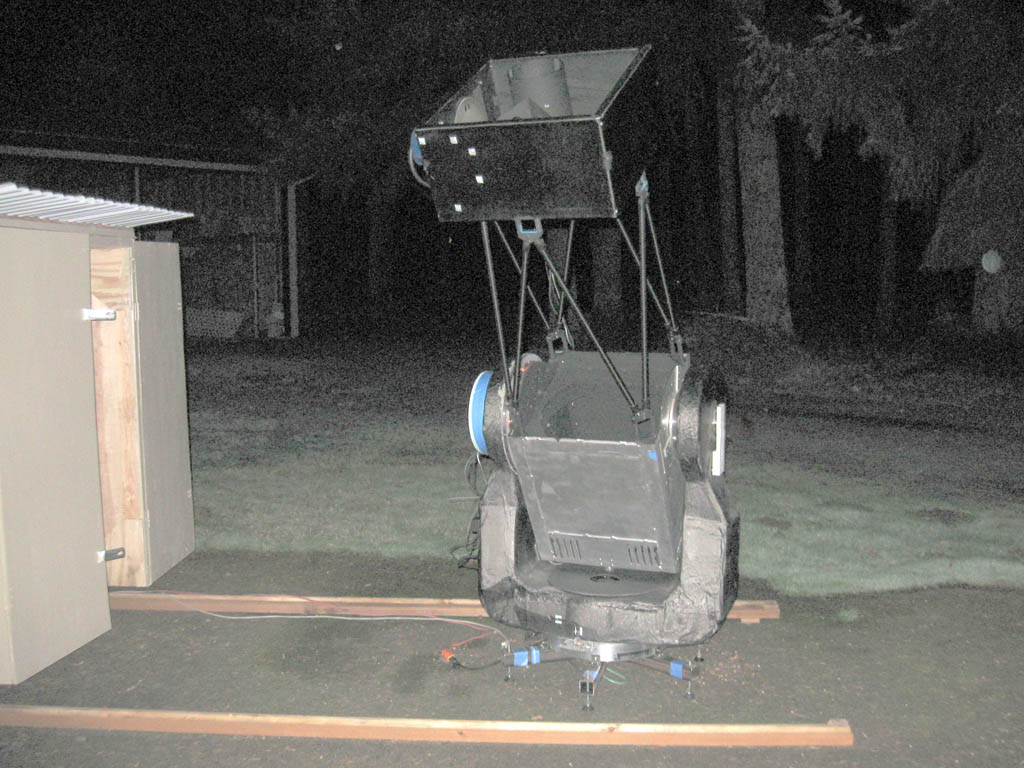
Here's a photo of the telescope. We had a Full Moon in the sky and I haven't yet installed light baffles in the tube --but my place is a lot darker than TMS. My temporary roll-off "observatory" building is to the left. Below is the new Skyview feature in SiTech.exe. The telescope was pointed at Regulus; its location is the pale yellow circle around the star. A yellow cross marks the zenith. The irregular purple curve is my local horizon. As you can see, the veiw to the northeast is limited.
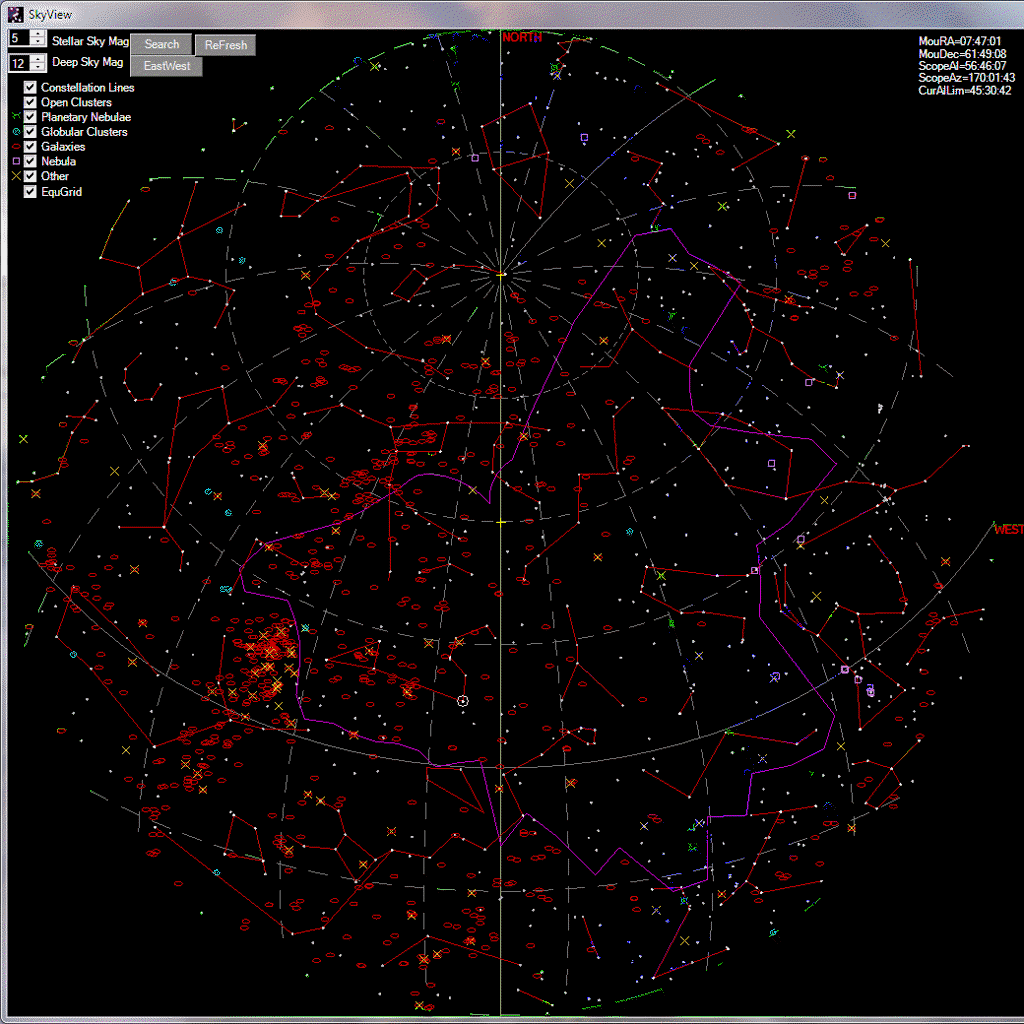
I love the autofocus feature in PointXP. Here is the focus curve display:
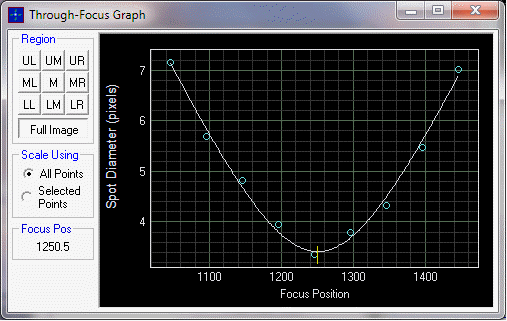
It takes about a minute to shoot nine focus images, and you end up with the camera focused within a fraction of the thousandth of an inch.
Next thing was to build a pointing model. SiTech runs a script to do this. The telescope moves to a series of positions on the sky, shoots an image, PointXP solves for the center of the image, and the telescope goes to the next position, and so on through a couple dozen positions. PointXP then computes a best-fit model linking the nominal pointing of the telescope to the actual pointed position of the telescope. We did a 23-star model. With no model applied, the root-mean-square pointing error was 2 arcminutes (that's darned good!). With a model, the pointing error fell to 3.5 arcseconds (that's very good). Apparently, tightening the formerly loose bolts on the altitude axis has made quite a difference.
Finally, we "homed" the telescope. When you do this, it locates optical switches in both axes and stores their positions with the pointing model. The next time you use the telescope, you again locate the home positions, and in theory can then immediately find things with the precision of the pointing model. In theory! I will test this next clear night.
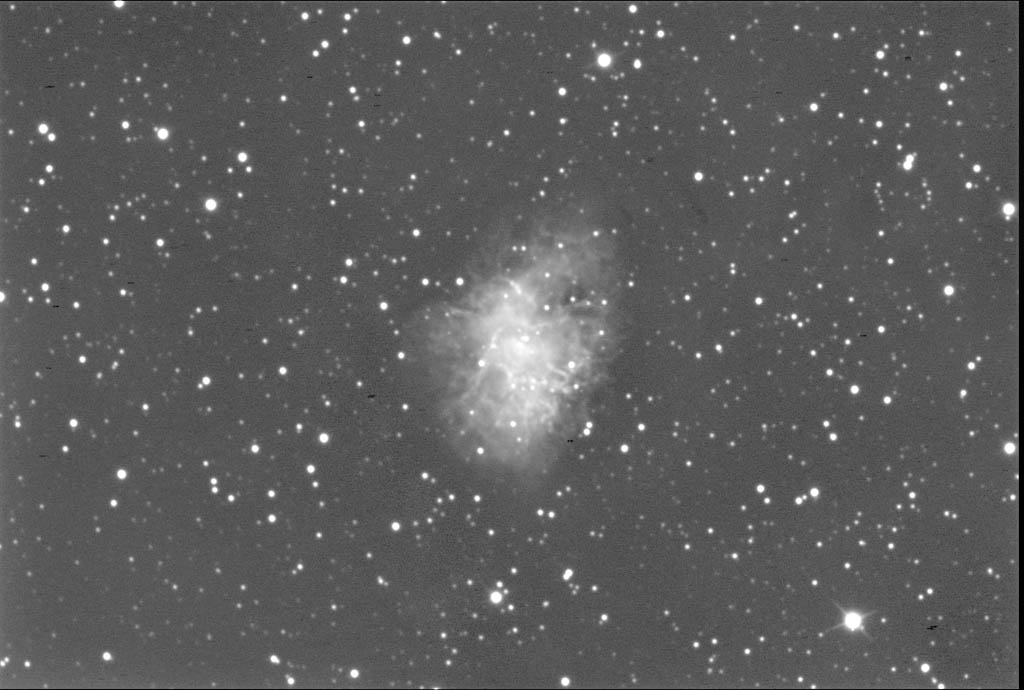
The image above should probably be called the "first-light image" although it is not. The actual first image shot at Lyons was taken a night earlier and shows half a dozen scattered stars. We set the CCD camera to work shooting 12 exposures of 300 seconds each unbinned through the red filter, and went into the house to get warm. During the eighth image, the Cal Poly spontaneously stopped tracking. The ASCOM text file that captures actions claimed that the object had gone below the horizon (although it had not). So you're looking at an image of the Crab Nebula with 7 x 300 seconds of exposure. Shown here at about 40% of full size, the stars look nice and round.
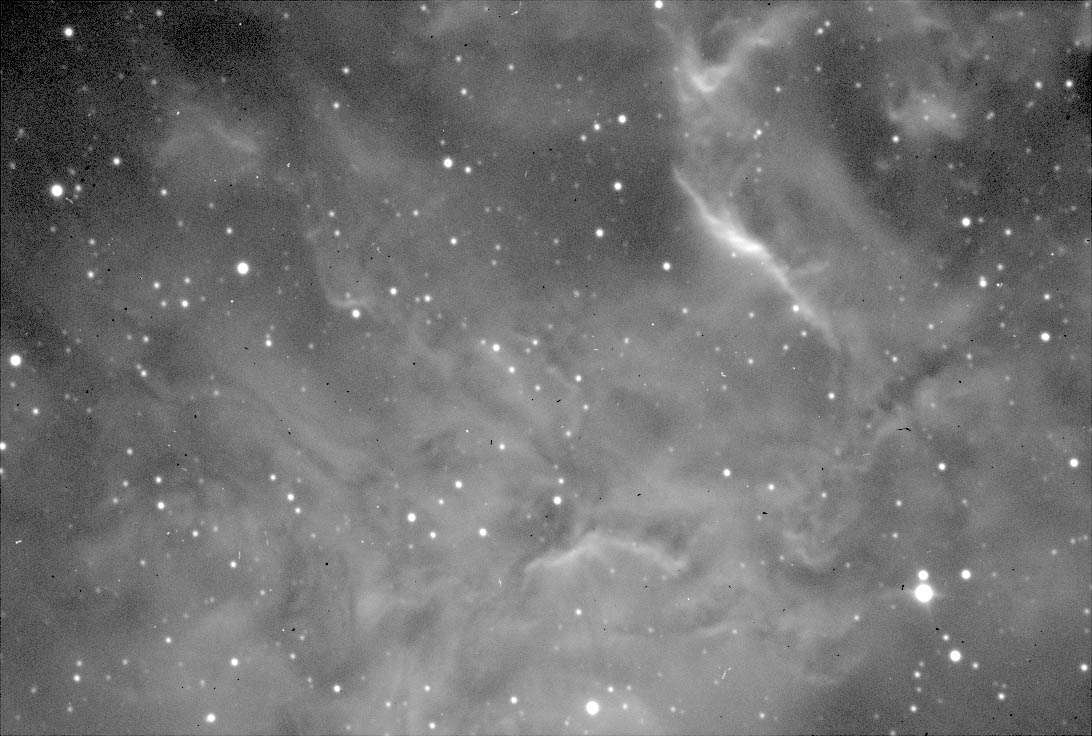
Encouraged by the images of the Crab, our next exposure was a fifteen-minute shot of IC 405 through a 7nm Orion H-alpha filter, binned 2x2. As you can see, the stars are round. Treated as Gaussians, the sigma of the images is 1.6 pixels (small), and the roundness parameter is 0.025 (very round). The picture is sprinkled with white "cosmic ray" hits in the exposure, and black specks from "cosmic rays" hitting the single dark frame. The image is gamma-scaled and adjusted for a nice grayscale, but otherwise not processed. As we note later, the seeing was rather poor this night.
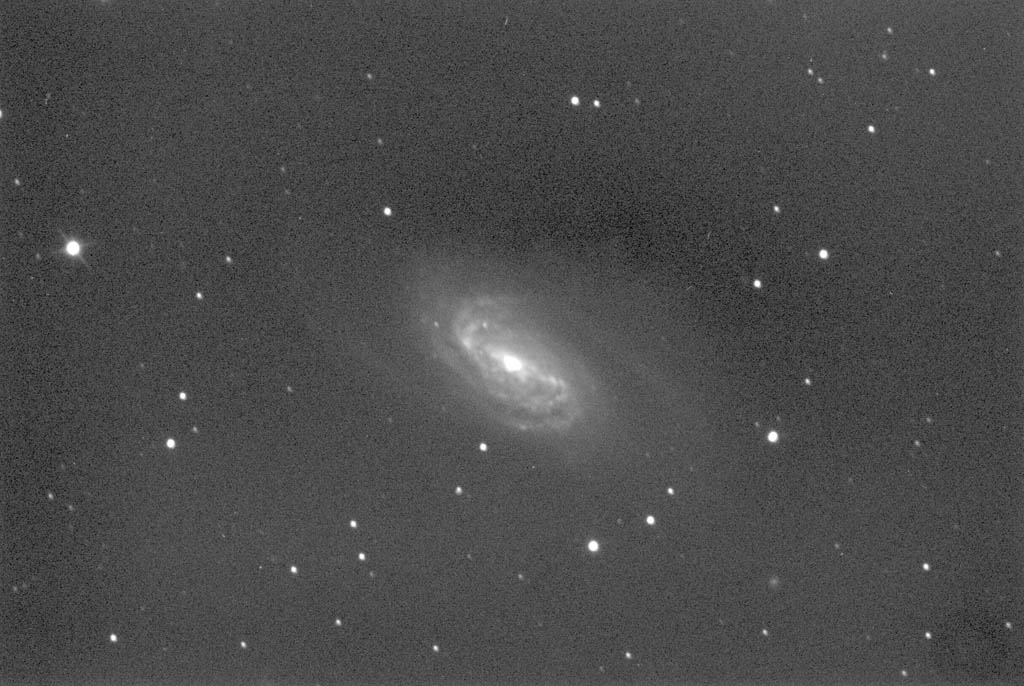
After Dan left for home, I started another exposure series on NGC 2903. This time tracking stopped during the fifth image, so the image above is the median of four unbinned red-filtered exposures of 300 seconds each, reproduced at about 40% of full size. Tracking is not so nice in this image. Remember there was a Full Moon in the sky, and by this time, the sky had developed a skein of high, thin haze.
![]()
This section of a non-tracked, unbinned image shown at full size demonstrates the seeing. The stars are clearly jumping around quite a bit, partially explaining the softish appearance of the images above. In the early evening, we noticed a coma-like appearance on the out-of-focus image of Regulus at 200x, and attempted to collimate the optics. The aberration remained despite moving the optical axis some 12 mm. We recollimated using a laser collimator. Although but the star image was a roiling ball of light, the slightly lopsided out-of-focus images were reasonably round at best focus.
Before putting the Cal Poly to bed for the night, I examined Castor with a 10 mm Radian eyepiece. The components of this double are roughly six arcseconds apart, and appeared as two touching balls of light each about the diameter of the sepeation between them. Out-of-focus images Pollux were much closer to round and uniformly lit than they had been earlier in the evening. I suspect that in the early evening, the two fans blowing air on the mirror cooled the upper side more than the lower side, distorting the figure of the mirror, but this is only guess and will need to be tested. I would estimate that in still air, the image of a star would shrink to roughly 1 arcsecond diameter.
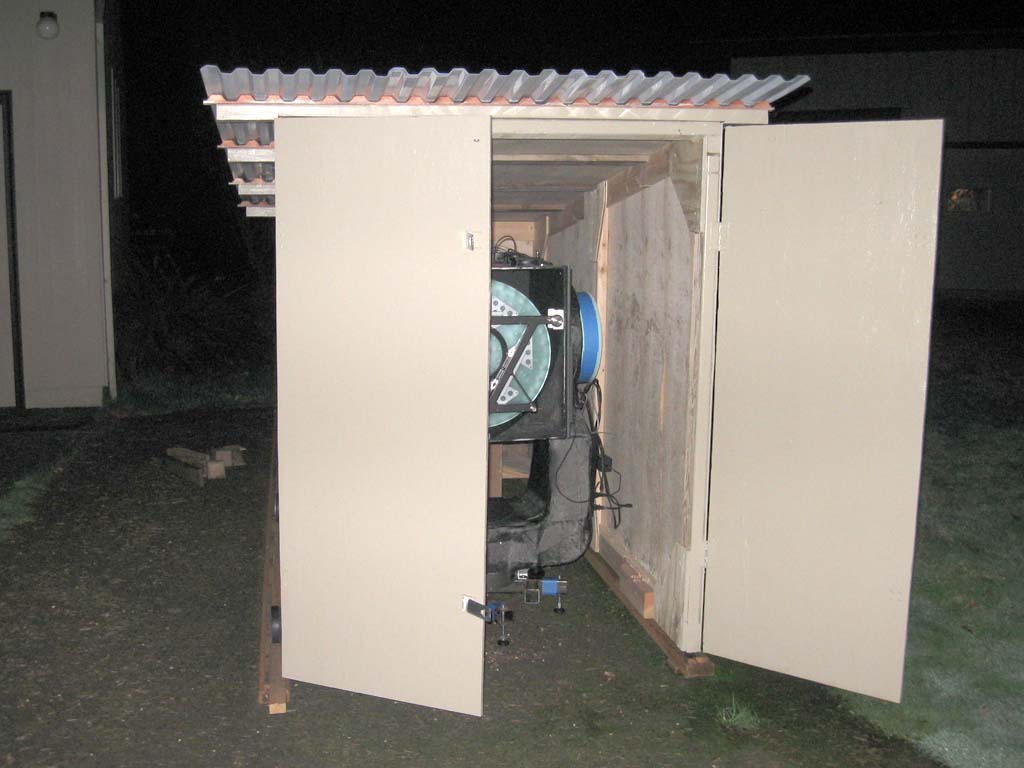
It is clear that a number of performance issues remain, but the session was very encouraging.
Finally, in closing, I rolled the shed over the Cal Poly 18 and bid it good night!
This is Cal Poly Bulletin 09
Main CalPoly Bulletin page or go back to Bulletin 08
Return to Richard Berry's Home Page